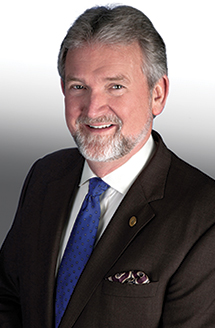Gene N. Herbek, MD
October 2014—Laboratory medicine is a human endeavor with zero tolerance for error. “Human endeavor” and “zero error” make for an awkward pairing, but those are the rules and they’re good ones. So we create systems to protect quality, sustain excellence, and provide education. We are vigilant. CAP quality assurance programs are instruments of that vigilance and of our member-driven commitment to patient safety.
The Laboratory Accreditation Program and CAP Surveys (discussed last month) are the biggest and best-known tools in our quality arsenal. We accredited our first laboratories several years before the Clinical Laboratories Improvement Act of 1967 became law. CAP accreditation greatly exceeds regulatory requirements; only about half the requirements on today’s checklists are CLIA-mandated.

Dr. Herbek
The accreditation program is a huge undertaking made possible by member volunteers. In the first six months of this year, we inspected 2,402 laboratories. The cumulative metrics are impressive: 7,710 laboratories and biorepositories around the world were CAP accredited as of Aug. 1, a group consisting of 7,313 LAP laboratories plus 331 reproductive laboratories, 40 forensic drug testing laboratories, and 26 biorepositories. Thirty-nine CAP-accredited laboratories have also earned ISO 15189 accreditation.
Two great strengths of CAP accreditation are specificity and context. Our checklists are complex but clear. The 3,000-item LAP checklist has been described as the ultimate practical textbook in pathology, a blueprint for setting up a well-run practice. Our inspectors are in active practice; they understand the day-to-day realities of the laboratory directors they meet. And stipulating that CAP-accredited laboratories provide teams for reciprocal inspections was a stroke of genius. Learning from peers cuts both ways; everyone comes away with new ways to think about what they do. It also makes the program more affordable.
The Accreditation Education Committee creates LAP inspector training programs that are posted on the CAP learning portal. Resources for inspection preparation are posted as well. These tools make it easy to do things right. In the two years ending Aug. 1, 2,399 CAP members and 131 junior members volunteered on inspection teams.
Richard M. Scanlan, MD, chairs our Commission on Laboratory Accreditation, which sets the operational parameters for inspections. Dr. Scanlan’s residents at the Oregon Health & Science University are trained to participate on inspection teams. When they are ready to take part, he includes them; they carry their own weight. He sees this as a routine aspect of training, one more form of graduated responsibility. I hope that many more programs will do the same. It’s some of the best education there is.
I’d like to share a couple of stories from international inspectors. In 2001, when Samir Sami Amr, MD, became our deputy commissioner in the Middle East, his was one of five CAP-accredited main laboratories in Saudi Arabia. When he stepped down earlier this year, we had 35 laboratories in eight countries across the region. Like most of our international growth, it was essentially organic; one laboratory director would talk to another about CAP accreditation and Dr. Amr would get a call. He’s an engaging guy and gets a lot of calls from his colleagues in the Middle East.
Shortly after Sept. 11, 2001, Dr. Amr got a call from the late Hans Peters, MD, who was then our international commissioner. Dr. Peters explained that the U.S. Department of State had issued guidance discouraging travel to the Middle East. Could Dr. Amr run the program on his own? He could and he did.
Dr. Amr and C. Robert Baisden, MD, the LAP international commissioner, say that opportunities for cross-cultural communication build useful skills. To break the ice, Dr. Baisden sometimes begins an inspection by explaining that the team is not a group of police officers; they are inspecting to help motivated peers make the changes they need to meet the goals they’ve set for themselves. Dr. Amr, who remembers when women in the workplace were rare in Saudi Arabia, says that female pathologists and lab technologists now routinely join his inspection teams. When a pathologist on his staff says that her spouse is uncomfortable about her traveling without a family member, he suggests that he be invited to meet the team at the airport. Sometimes they do, he says, and it’s always fine.
Dr. Baisden has inspected nearly every laboratory in China, often with Bharati Jhaveri, MD, who is deputy international commissioner. I’ve inspected laboratories in India with Dr. Jhaveri; her organizational skills are the stuff of legend. Those two tell what could be the best story I’ve heard yet about international accreditation.
Dr. Baisden had been team leader for the initial inspection of a large laboratory where the general checklist had gone fairly well. However, Earle S. Collum, MD, who inspected the blood bank, had found 22 deficiencies and spent 1.5 days working with the staff to correct them. Not surprisingly, they passed the follow-up inspection. But just before the summation conference, the department chair took them aside. “Some of the techs want to speak with you,” he said.
“I thought to myself, here comes trouble,” Dr. Baisden says, but trouble was not what they would find.
Instead, the staff shared a paper they had written after the first inspection that amounted to a line-by-line endorsement of the accreditation program. “We want to thank you for teaching us how to run a blood bank,” they said. One has since trained with Dr. Jhaveri to become a CAP inspector. As Dr. Baisden likes to say, the CAP accreditation process brings out the best in people.
Our quality improvement programs keep patients safe and laboratory professionals motivated. They create the space where the best diagnoses are made, clarity and goodwill reside, and healing begins. And because so many pathologists have worked so hard to earn it, that space is ours to embrace.
[hr]
Dr. Herbek welcomes communication from CAP members. Write to him at president@cap.org.
![]()
 CAP TODAY Pathology/Laboratory Medicine/Laboratory Management
CAP TODAY Pathology/Laboratory Medicine/Laboratory Management
